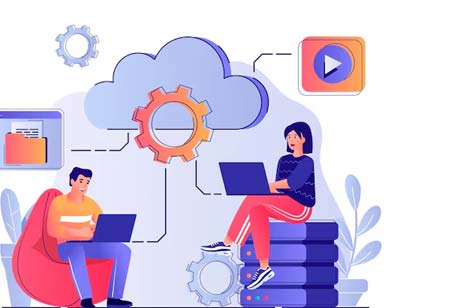THANK YOU FOR SUBSCRIBING
Be first to read the latest tech news, Industry Leader's Insights, and CIO interviews of medium and large enterprises exclusively from Hrtech Outlook
THANK YOU FOR SUBSCRIBING

By
HR Tech Outlook | Friday, October 24, 2025
Stay ahead of the industry with exclusive feature stories on the top companies, expert insights and the latest news delivered straight to your inbox. Subscribe today.
Employee expectations are evolving, so the benefits packages that businesses offer must adapt to meet these demands.
Fremont, CA: Organizations aim to attract, engage, and retain top talent. As employee expectations evolve, businesses must adapt their benefits packages to meet these new demands. In the coming years, we can expect significant changes in how employee benefits are designed and delivered, emphasizing holistic well-being and incorporating advanced technologies. Organizations are working to attract, engage, and retain top talent. As employee expectations evolve, businesses must adapt their benefits packages to meet these new demands. The coming years will significantly change how employee benefits are designed and delivered, shifting the focus towards holistic well-being and incorporating advanced technologies.
Organizations will increasingly move away from one-size-fits-all benefit packages and offer more flexibility and choice to employees. This trend includes multi-generational employees, remote workers, and individuals with different life stages and personal circumstances. Customizable benefits packages allow employees to select from various options, such as health insurance, wellness programs, paid time off, or financial planning services.
Employers will offer more flexible working hours and the ability to work from different locations as remote work becomes more entrenched and hybrid work models persist. Benefits like flexible hours, remote work stipends, and coworking space memberships will become standard offerings.
Mental health benefits will continue to expand, with more organizations offering access to therapy, counseling, and wellness apps. Employee assistance programs will grow to include services for stress management and mindfulness training. AI-powered mental health tools, like digital therapy bots, will complement traditional in-person counseling sessions, giving employees more options for support.
The rising cost of living and financial stress have increased the demand for financial wellness benefits. Companies will offer robust resources like student loan repayment assistance, debt management tools, retirement planning, and financial literacy programs. Employers will also provide financial coaching, investment advice, and savings plans tailored to help employees achieve their financial goals.
The future of health benefits is moving beyond traditional healthcare coverage. Telehealth will become a standard part of employee health benefits. Employees can access 24/7 virtual doctor visits, mental health therapy sessions, and health consultations.
The use of technology in benefits administration will be more sophisticated than ever. Employee benefit portals will become more user-friendly and intuitive, with AI-powered chatbots answering questions and helping employees make informed decisions. These bots can guide employees through the benefits selection process, answer questions, and even provide personalized recommendations based on the employee’s profile and preferences.
Organizations will use blockchain technology to secure benefits information, such as insurance claims and payroll data. Blockchain’s transparency and immutability will help ensure that employee benefits data is secure and tamper-proof.
I agree We use cookies on this website to enhance your user experience. By clicking any link on this page you are giving your consent for us to set cookies. More info

However, if you would like to share the information in this article, you may use the link below:
www.hrtechoutlookapac.com/news/the-evolving-landscape-of-employee-benefits-nid-4084.html



